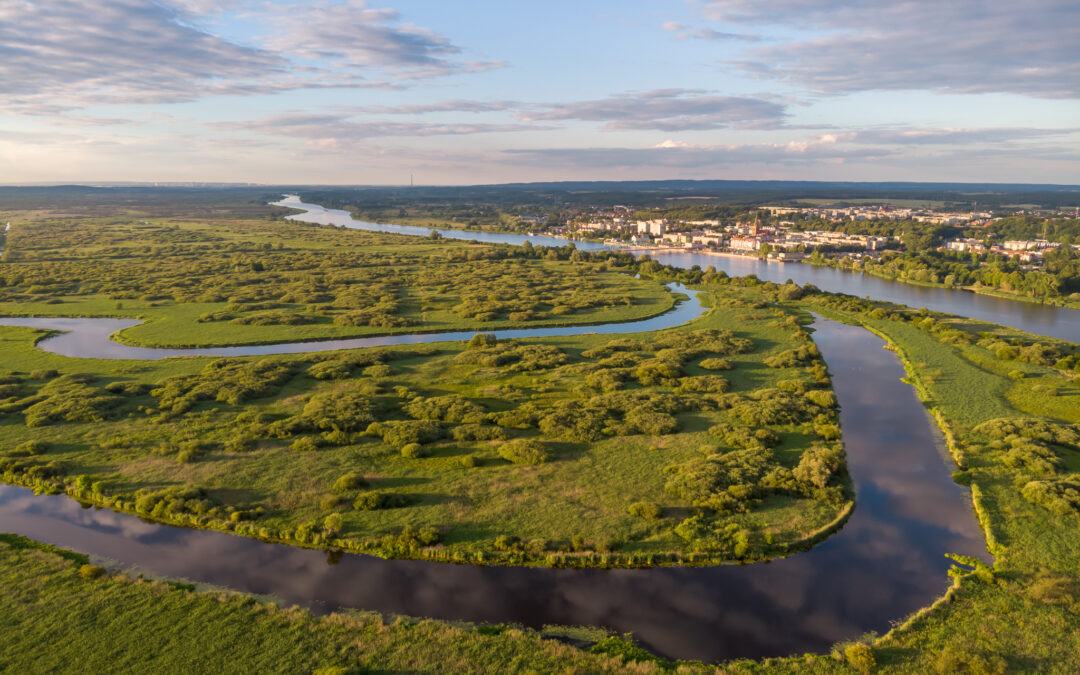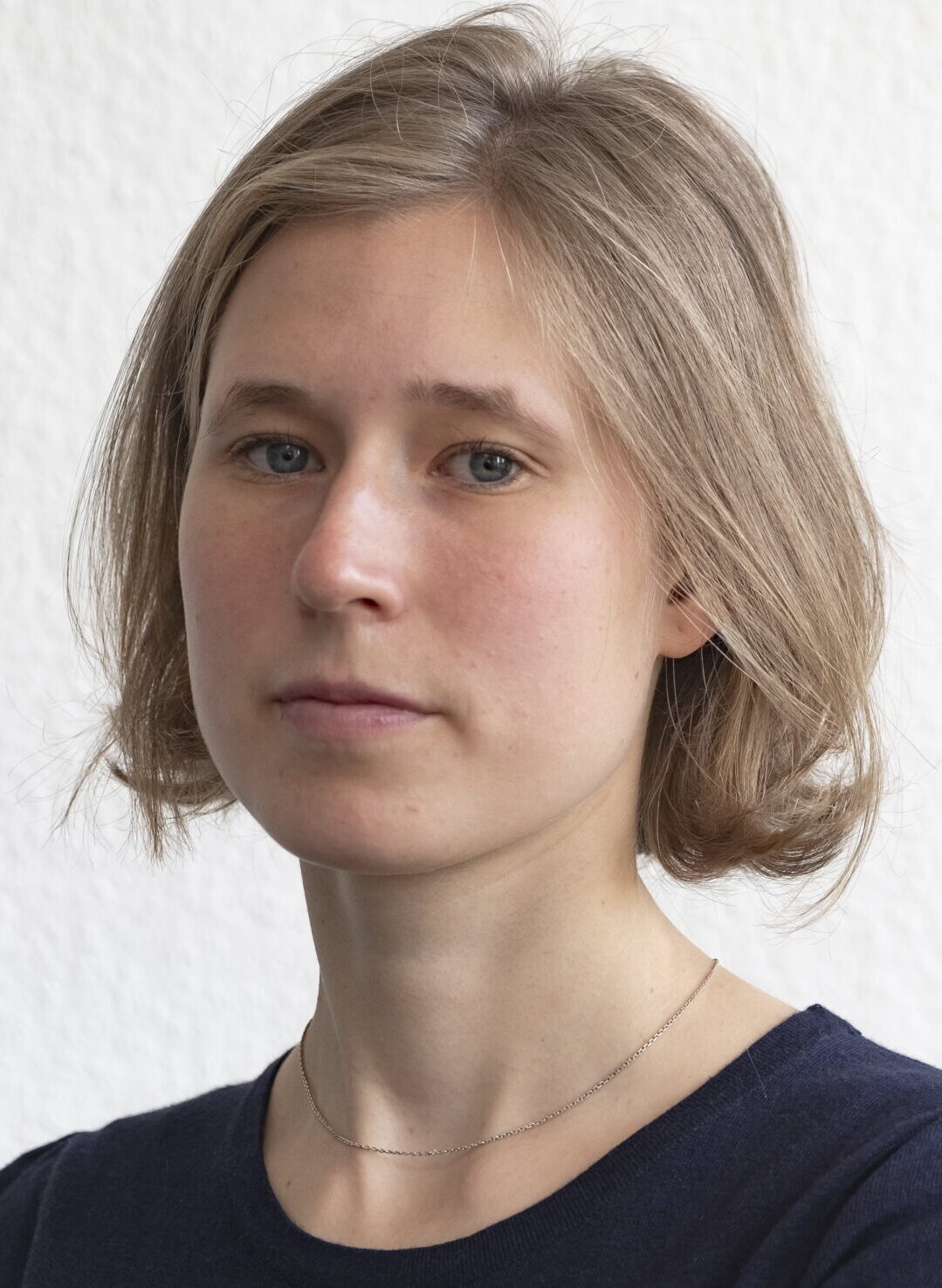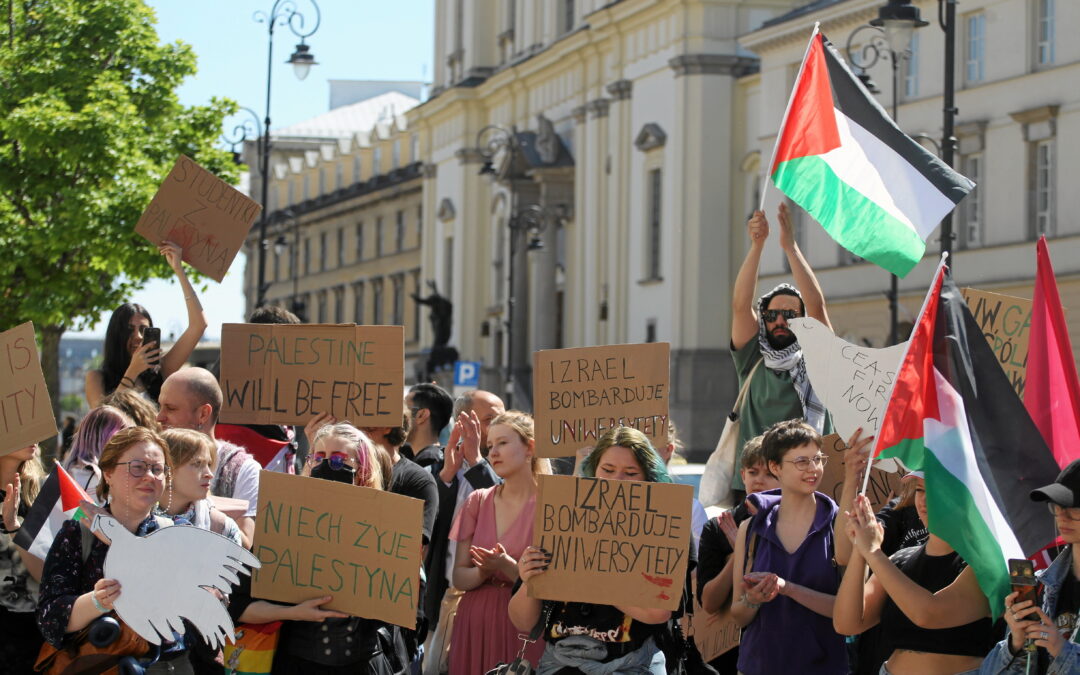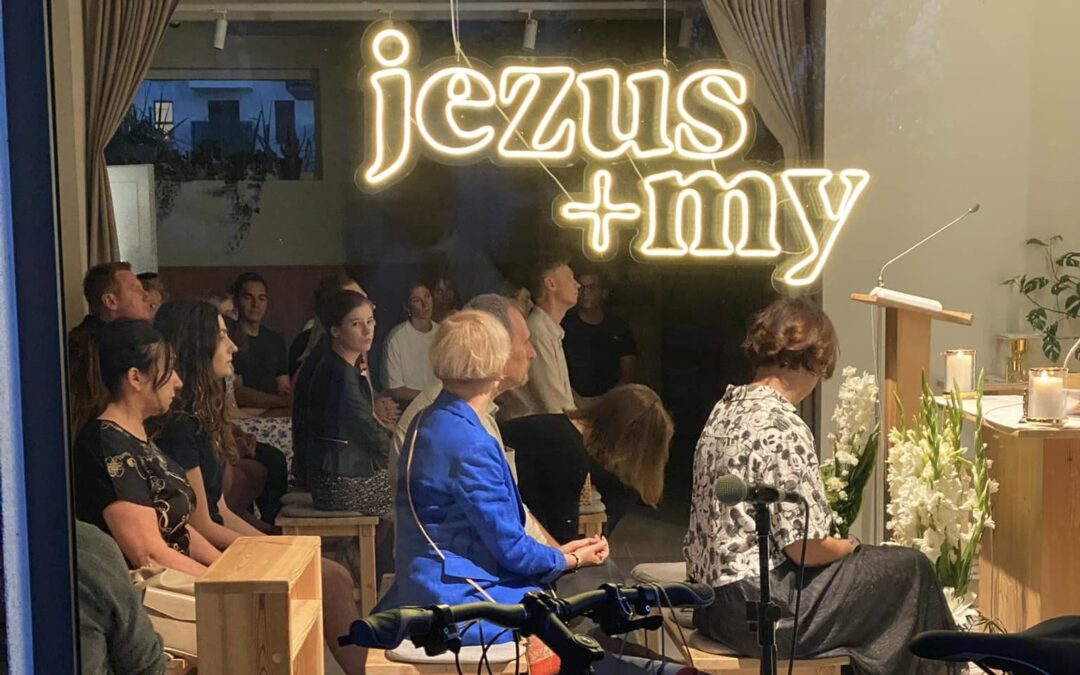By Luisa Zenker
The government wants to double the area of national parks in the country and plans to establish the first new park in the Lower Oder Valley. While environmentalists support the proposal, anglers and local politicians express scepticism.
“Theoretically there could be a lot of fish, but in practice it looks a little different,” says angler Marcin with a wry smile.
The 33-year-old Pole is sitting on the banks of the Oder River, his fishing bucket still empty. It is the production worker’s day off, which is why he drove to the Lower Oder Valley Landscape Park, a 6,000-hectare nature reserve in the northwest of Poland.
Here – where the river waters flow through a network of small canals, supporting a habitat that is home to hundreds of species of bird – Poland’s first new national park in 23 years could be established.
That is the plan of the Polish government which, after taking office in December, pledged to increase the number of national parks. Environmental activists have long argued that Poland, which is ranked 29th among European countries in terms of the share of national parks in the country’s area, needs to extend the protected areas.
The new government wants to create Poland's first new national parks in over two decades, as well as to expand existing ones.
The climate minister's party notes that national parks cover only 1.1% of Poland’s land area compared to an EU average of 3.7% https://t.co/61TCuiUF7N
— Notes from Poland 🇵🇱 (@notesfrompoland) December 28, 2023
The Lower Oder Valley “is very important in biodiversity”, a climate ministry spokesman told Notes from Poland. A national park has “the highest rank of nature protection”, he added, explaining why the current landscape area should become a national park.
It is not yet known when exactly the national park will be established. The climate ministry has cited various obstacles, among which, “not all local decision makers are aware of the need to halt biodiversity loss, and nature protection is not always a priority in their vision of socio-economic development”.
Marcin, the angler, is also sceptical, as are many others in the town of Gryfino, which is situated next to the landscape park. “There are other ways to protect nature,” he says.
The Lower Oder Valley is located in both Germany and Poland. On the German side, it is protected as a national park. On the Polish side, it has been a landscape park since 1993.
It might have stayed that way if the 2022 Oder disaster had not happened. High salinity on the Polish side of the river led to toxic algal bloom, which in turn caused the death of over half the river’s fish.
"Marches of mourning" have been held in Polish cities amid the poisoning of the Oder river, where over 100 tonnes of dead fish have washed up .
"This is not just an environmental disaster, it is a disaster of the Polish state," says one activist https://t.co/TTfift5swk
— Notes from Poland 🇵🇱 (@notesfrompoland) August 23, 2022
In response, several scientists, photographers and artists from the area founded the Lower Oder Valley National Park initiative. One of their members is ecologist and ornithologist Dominik Marchowski, who lives in Gryfino. He loves the region, home to more than 200 bird species, many of which are endangered.
“It’s a unique place, like the Amazon,” adds hydrobiologist Agnieszka Szlauer-Łukaszewska, a fellow member of the national park initiative.
Both of them highlight the park’s beauty, as well as its ecological importance. Its ecosystem stores carbon in mossy roots, filters water, cools the park in the summer and provides a refuge for fish – essential if river salinity becomes too high again.
Yet today the park’s waterways face significant issues. Polders built 100 years ago for agriculture now block the channels. A lack of water flow means not enough oxygen, which leads to fewer fish, and more sedimentation and bush encroachment.
Artificially straightened rivers have created conditions that worsen flooding in Poland.@WojciechKosc looks at grassroots initiatives to restore rivers to their natural state in order to protect against floods and droughts as well as sustain biodiversity https://t.co/7egIhFOmCG
— Notes from Poland 🇵🇱 (@notesfrompoland) September 19, 2024
Marchowski and Szlauer-Łukaszewska suggest that a national park could offer the best solution to protect the reserve. Currently, one ranger is responsible for the landscape park, while a total of 14 employees are in charge of the seven landscape parks located in the province. Meanwhile, a Polish national park employs 50 to 60 people.
The two scientists suggest that the reserve is the “perfect” candidate for a national park. It already belongs to the state, meaning that no land needs to be expropriated. It is also not subjected to logging, which in other potential national park locations has led to disagreement between foresters and conservationists.
Asked about anglers’ concerns that a national park would restrict access to fish, Marchowski and Szlauer-Łukaszewska state: “That’s fake news. You can keep fishing.”
“First, clean up the water”
Krzysztof Grzelak, head of the Fishing Association Gryfino Regalica, is not so sure about the scientists’ claim. On his office walls hang posters of grey bream, green pike, black catfish and eels – delicacies of the seven local fisheries that employ a total of around 30 staff. For 70 years, the association has been responsible for fishing in the area.
Since early August, over 100 tonnes of dead fish have been removed from a lake and canal in Poland.
PiS, which was in power during the height of a similar crisis in 2022, accuses the government of hypocrisy and downplaying the disasterhttps://t.co/uQVefxHuVT
— Notes from Poland 🇵🇱 (@notesfrompoland) August 19, 2024
According to article 15 of the Polish Nature Conversation Act, “fishing and the use of motorboats are prohibited in national parks, with the exception of areas marked in the management plan”. Grzelak is afraid that the permitted areas would be too small and restricted, and that the closed season would be too long for commercial fishing.
Since the Oder disaster two years ago, he has invested one million zloty (€234,000) in revitalising the fish population, although he believes that “the fish die-off will happen again every year”.
Therefore, he has other priorities before he starts thinking about a new national park. “First, clean up the water and ensure good water quality. Second, the national park law must be changed, as it is in Germany.”
On the German side of the park, zones have been introduced indicating where you can and cannot fish. At present, Grzelak does not know where the national park boundary will be and where fishing might be permitted.
Sorry to interrupt your reading. The article continues below.

Notes from Poland is run by a small editorial team and published by an independent, non-profit foundation that is funded through donations from our readers. We cannot do what we do without your support.
The climate ministry has set up several working groups to establish such details and are expected to prepare the initial documents by October. According to nature conservation insiders, the aim is for the national park to open in 2025.
“We need more information”
Tomasz Miler, deputy mayor of Gryfino, doesn’t believe that the park will open in 2025. He keeps repeating the words, “we need more information about how it will affect us”.
The deputy mayor does not expect the municipality to gain much from national park tourism. Since the town’s destruction in World War Two, prefab blocks of flats have replaced villas on the riverbank. The local hotel hosts construction workers rather than kayak tourists. The staff in the tourist information centre only speak Polish.
Gryfino does not struggle with unemployment. Company buses drive employees to the Zalando warehouse, where 3,000 people work for the German online retailer. The chimneys of the Lower Oder power station, which employs several hundred local residents, can be seen from the riverbank.
Other businesses have set up shop nearby, including the German Fliegel-Textilservice. According to Miler, the company washes 80% of all towels from Berlin’s high-end hotels.
Gryfino locals seem divided about the national park, which Miler puts down to a lack of information from the government. “How can you say yes or no if you don’t know anything?” he says.
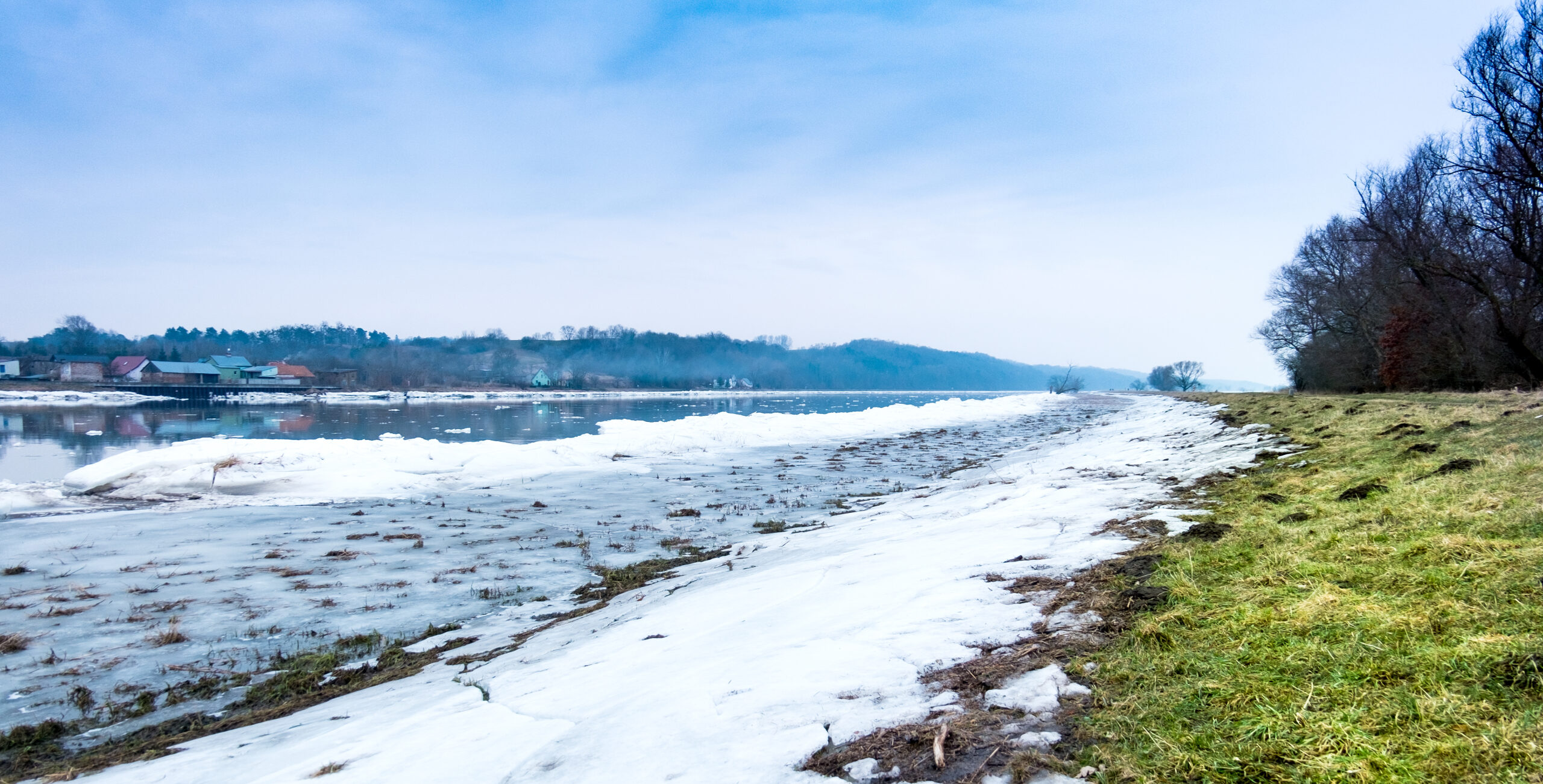
The Lower Oder Valley at the Poland-Germany border (photo credit: Daniela Kloth / kloth-grafikdesign.de under GNU Free Documentation License 1.2)
The deputy mayor laughs at the government’s suggestion that the municipality would receive a national park grant, which he claims will pale in comparison to the revenue received from business tax.
He is also concerned that companies will carry out their expansion plans elsewhere if a national park is created in Gryfino, which would entail the introduction of core zones and buffer zones. The former are strictly protected from human interference, while the latter restrict manufacturing, commercial and agricultural activities.
“We need information on how the buffer zone will affect us,” says Miler. Nonetheless, the climate ministry claims that it will be possible to make “exceptions to the law.”
“Don’t make the same mistakes as the Germans”
A blue and red steel bridge connects Gryfino with Mescherin, the small German town on the other side of the Oder, where a national park has existed since 1995. In Mescherin, the locals do not seem to have heard much about their Polish neighbour’s plans.
“More mosquitoes,” joke two men when asked about the new national park. “But at least the park will keep those away from us,” they say with a laugh, looking in the direction of wind turbines.
Permanent camper Olaf Krüger from Schwedt, a town located inside the park, is sceptical. “I have to pay a guide to go canoeing in the national park,” he says. He has felt excluded from nature ever since the German side became a national park.
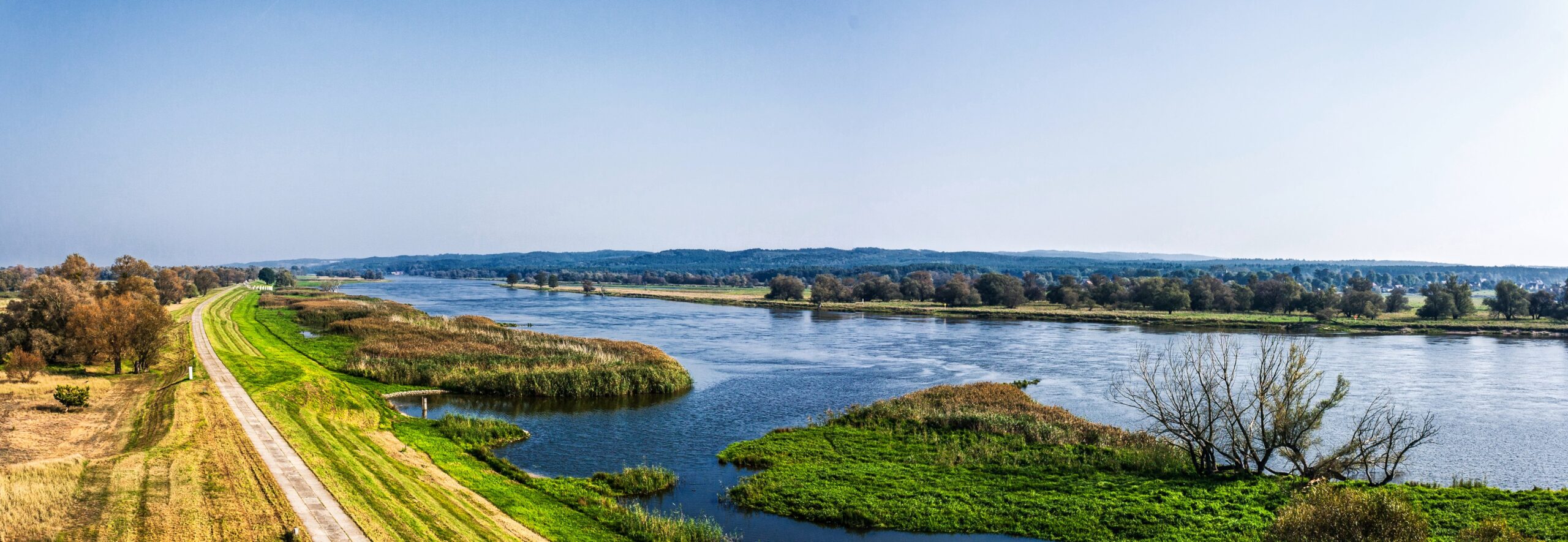
The Lower Oder Valley National Park in Germany (photo credit: Uckermaerker/Wikimedia Commons under CC BY-SA 4.0)
Meanwhile Frauke Bennett, a certified canoe guide, thinks it is a good idea for Poland to create a national park. She already takes tourists to the Polish side, which she believes has achieved the wild nature that the German side is working towards. Because of that, Poland should protect it more, she explains.
National park manager Dirk Treichel agrees. “Actually, as things stand, the Polish side should be the national park and the German side the landscape park.” While intensive agriculture with fertiliser planes was practised on the German side until 1989, nature has been able to recover on the Polish side since the end of the Second World War.
Treichel is enthusiastic about the prospect of a cross-border national park. In fact, Polish biologist Mieczysław Jasnowski and his German counterpart Michael Succow – awarded for his work on creating nature reserves in the region – proposed the idea in the 1990s. It never materialised due to a “lack of political will”, they claimed.
Yet Treichel warns that Poland “shouldn’t make the same mistakes as the Germans”. The German national park once had very strict rules – fishing, for example, was heavily restricted. Since 2006 they have been liberalised, meaning that factories are allowed to operate close to the park and fishing is permitted in certain zones.
“Compromise is required”
The controversy around the Lower Oder Valley suggests that the Polish government’s goal of doubling the area of national parks in the country will be difficult to achieve.
The climate ministry wants to establish 14 "community forests" that will help create "green rings" around large cities.
The forests will provide a place for recreation and contact with nature while helping fulfil the government's pledge to reduce logging https://t.co/an59N3guKE
— Notes from Poland 🇵🇱 (@notesfrompoland) July 30, 2024
Since 2000, Polish national parks require the approval of the relevant local municipalities. As a result, the expansion of the Karkonosze National Park failed two years ago because Piechowice local council disagreed with it.
The climate ministry therefore wants to support local communities, it told Notes from Poland. However, this support seems to be limited to funds instead of the much-needed information, implementation support and regulation flexibility.
“I dream that people will understand why we need national parks,” says Elżbieta Wilk-Woźniak, director of the Institute for Nature Conservation of the Polish Academy of Sciences. “The unique landscape in Poland needs to be protected,” she continues. But she emphasises that to increase the number of national parks, more education, understanding and compromise is required.
Anglers, scientists and fishers are now discussing joint solutions in the working groups for the new national park in the Lower Oder Valley. Once the documents have been drawn up, they will need to be approved by the local municipalities in Kołbaskowo, Gryfino and Widuchowa, before being ratified by parliament and signed off by President Andrzej Duda.
Until then, angler Marcin can safely park his car in the landscape park, waiting for the next fish to bite.
Main image credit: Piotr Piznal
